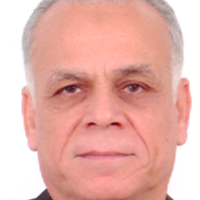
S. Ghoniemy
Work place: College of Computers and Information Technology/Computer Engineering Department, Taif, 888, KSA
E-mail: ghoniemy@tu.edu.sa
Website:
Research Interests: Computer systems and computational processes, Computer Vision, Robotics, Computer Architecture and Organization, Computer Networks
Biography
Prof. Dr. Said Ghoniemy received his B.Sc. degree in Electrical Engineering, and his M. Sc. degree, in Communications Engineering, from Military Technical College (MTC) Cairo-Egypt in 1968 and 1979 respectively. He received his Ph. D. from “l'Institut National Polytechnique de Toulouse (l'INPT)”, France in 1982. He is currently a Professor in the Department of Computer Systems, Faculty of computers and Information Sciences, Ain Shams University, Cairo, Egypt, and now he is a Professor of Computer Engineering at Taif University, KSA. He served as a director of the Information Technology Research & Consultancy Center (ITRCC), Ain Shams University, for more than 6 years. He has been the Vice Dean of the Faculty of computers and Information Sciences, Ain Shams University. His research interests include Computer Systems, Signal Processing, Robotics & Computer Vision, and Mobile Ad-hok Networks.
Author Articles
New Region Growing based on Thresholding Technique Applied to MRI Data
By A. Afifi S. Ghoniemy E.A. Zanaty S. F. El-Zoghdy
DOI: https://doi.org/10.5815/ijcnis.2015.07.08, Pub. Date: 8 Jun. 2015
This paper proposes an optimal region growing threshold for the segmentation of magnetic resonance images (MRIs). The proposed algorithm combines local search procedure with thresholding region growing to achieve better generic seeds and optimal thresholds for region growing method. A procedure is used to detect the best possible seeds from a set of data distributed all over the image as a high accumulator of the histogram. The output seeds are fed to the local search algorithm to extract the best seeds around initial seeds. Optimal thresholds are used to overcome the limitations of region growing algorithm and to select the pixels sequentially in a random walk starting at the seed point. The proposed algorithm works automatically without any predefined parameters. The proposed algorithm is applied to the challenging application “gray matter/white matter” segmentation datasets. The experimental results compared with other segmentation techniques show that the proposed algorithm produces more accurate and stable results.
[...] Read more.Other Articles
Subscribe to receive issue release notifications and newsletters from MECS Press journals